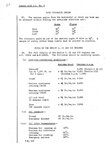Wikipedia says the last Fulmar was delivered to the RAF on 11 December 1942. Wouldn't the final Fulmar of Dec 1942 have a different Merlin than the first of Jan 1940?
It did have a different Merlin, the Mk.30 was installed on Fulmar II (vs. Merlin VIII on Fulmar I).

